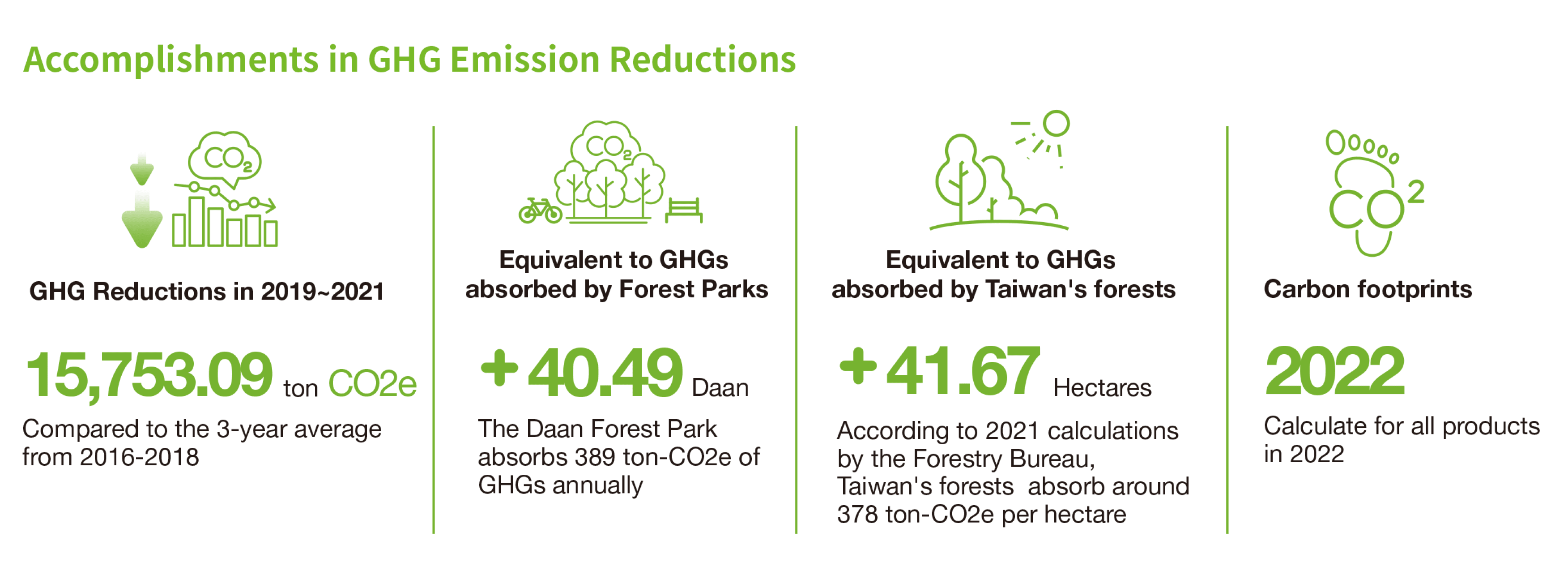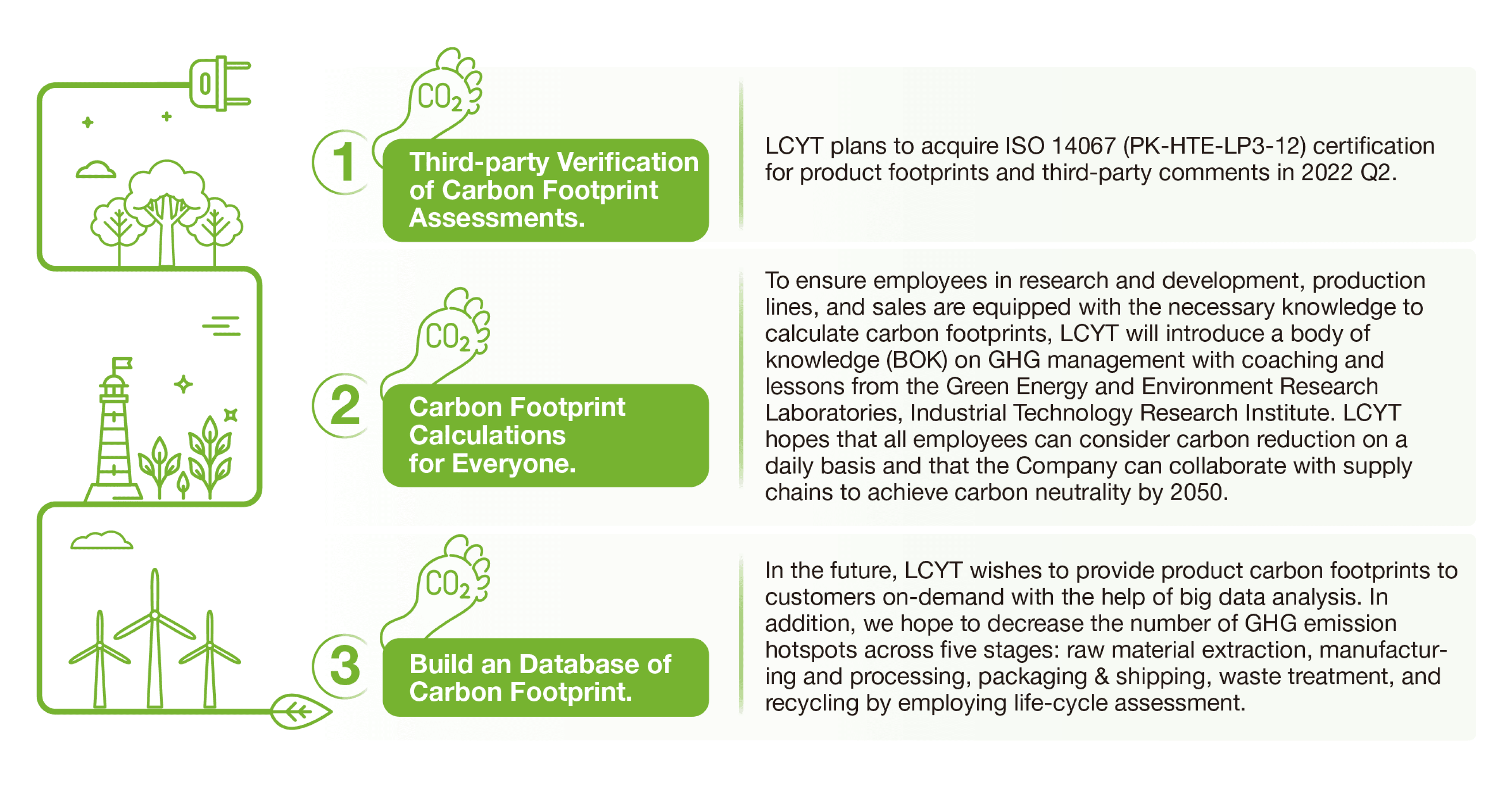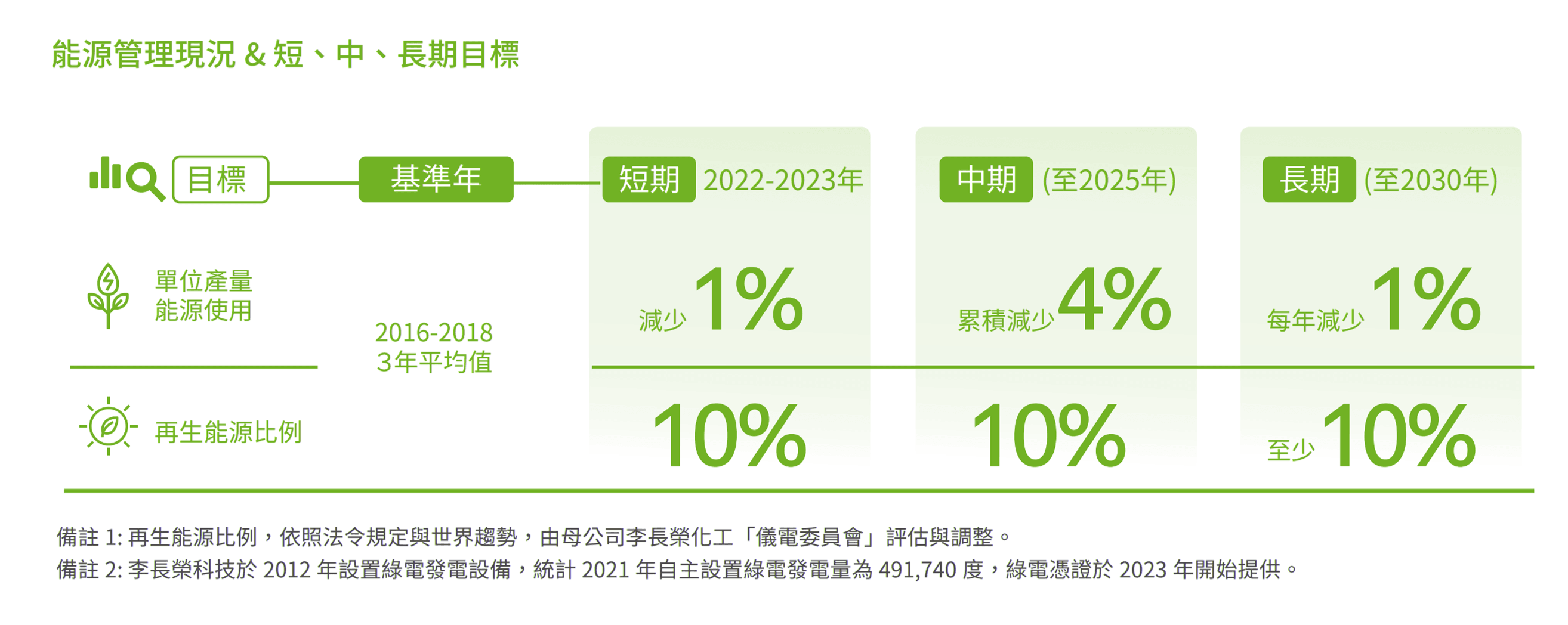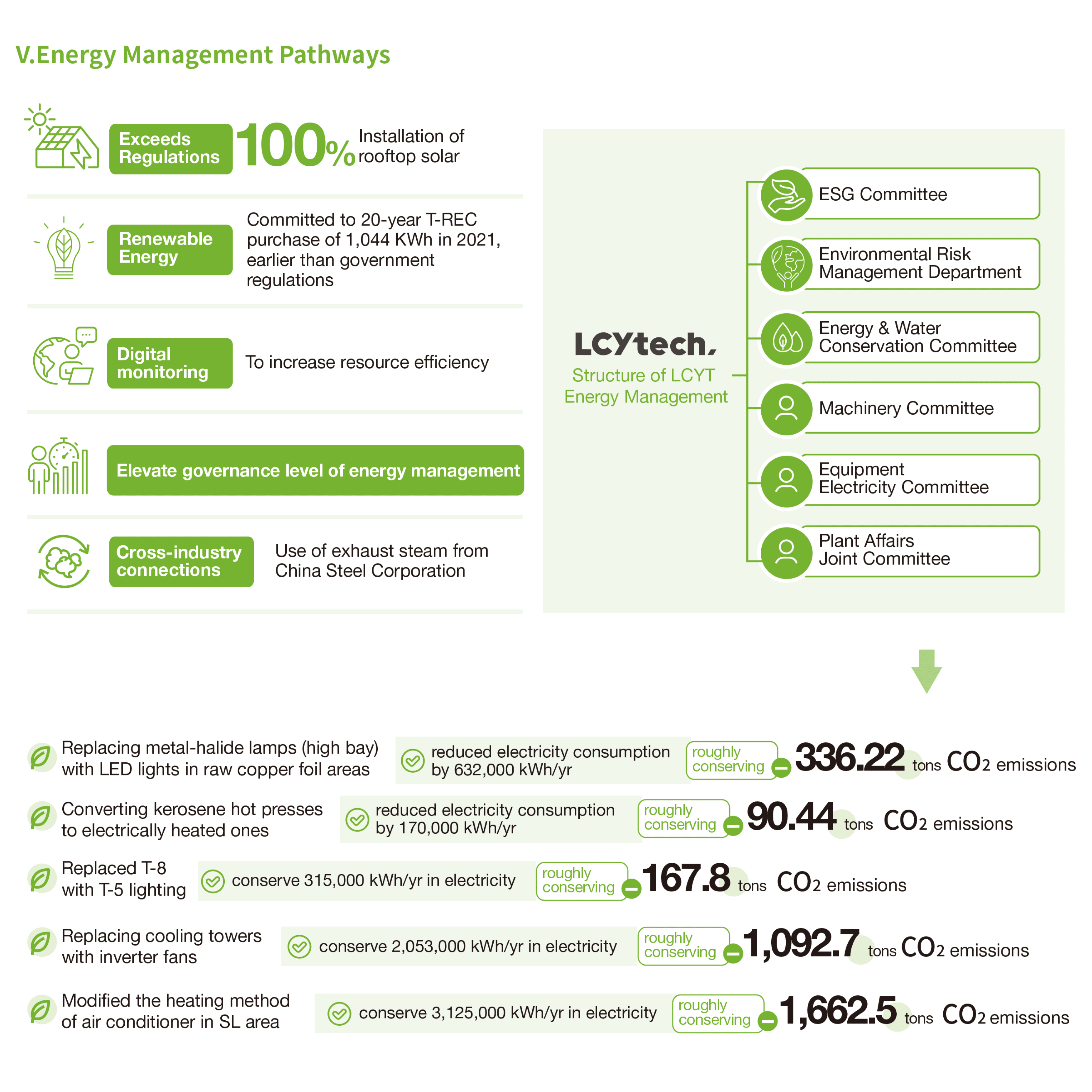
LCYtech introduced ISO14064-1 in 2010, conducted greenhouse gas inventories in 2008 and 2009 and passed third-party verification; then obtained the British Standards Institution (BSI) PAS 2050:2011 product and service carbon footprint verification, and in 2013 The ISO 50001:2018 energy management system is introduced every year; in addition, every year, we cooperate with the Industrial Bureau of the Ministry of Economic Affairs to promote the "Industrial Greenhouse Gas Voluntary Reduction Promotion Plan", implement independent inventory of greenhouse gas emissions, and track greenhouse gas emission information.
Through inspections by third-party impartial institutions and in cooperation with the carbon reduction project promoted by the government, LCYtech to inspect greenhouse gas emission hot spots and review key energy-consuming equipment. Greenhouse gas emission reduction has shown partial results in 2021, with unit carbon emissions increasing from It dropped from 6.89 (ton-CO2e/ton) in 2020 to 6.03 (ton-CO2e/ton) in 2020. After the initial performance of energy-saving and carbon-reduction measures, and in response to the EU's expected gradual implementation of "carbon inventory" in 2023, LCYtechlaunched the "Carbon Footprint" project in the fourth quarter of 2021. Through the guidance of the Institute of Green Energy of the Industrial Research Institute, according to The methodology of ISO 14067 comprehensively examines the carbon footprint of products. It is expected that the carbon footprint calculation of all products will be completed by the end of 2022, and third-party inspections will be gradually completed.
LCYtech the "Carbon Footprint" project to conduct an inventory of quantitative activity data at each stage of the life cycle of products or services to examine carbon emission hot spots and carry out subsequent carbon management or carbon neutrality for energy conservation and carbon reduction. In addition, it will also require Upstream product suppliers work together to reduce product carbon footprints, reduce greenhouse gas emissions and form a green supply chain, fulfilling corporate responsibilities to protect the earth from rising temperatures.





